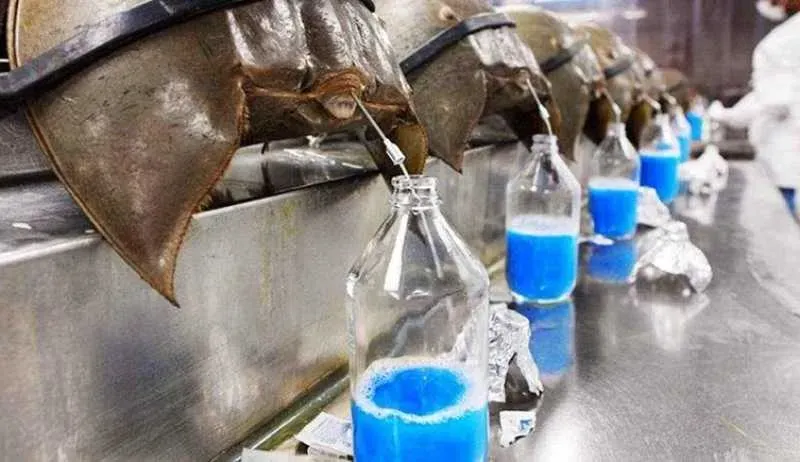
With a 450 million-year lifespan, horseshoe crabs predate the dinosaurs. It implies that they lived through the cold ages and saw the extinction of millions of other species. They have been wonderful "living fossils," and they have also helped most of us survive.
 |
| Horseshoe crabs have been alive for 450 million years, making them older than dinosaurs. Image © Jarous/Shutterstock |
Horseshoe Crab Facts
The simple immune system of the horseshoe crab makes its blood valuable to our biomedical industry. Horseshoe crabs are constantly at risk of getting sick because of their environment, which has the potential to contain billions of germs per milliliter. The horseshoe crab's blood coagulation and immune systems guard it against infection.
 |
| Horseshoe Crab. Image © Rattiya Thongdumhyu/Shutterstock |
The horseshoe crab's blood is a vivid blue color and contains LAL, or Limulus Amebocyte Lysate, which aids in the crab's ability to fend off infections. These proteins are produced when unfavorable organisms like Gram negative bacteria are present and cause the animal's blood to clot around the wound and pathogens, protecting it from further harm.
Why is the Horseshoe Crab’s Blood Important to Humans?
If you've ever had a vaccination or given your pet a rabies shot, you owe the horseshoe crab a debt of gratitude. Utilizing a test made from horseshoe crab blood, it has been demonstrated that vaccines, injectable medications, intravenous solutions, and implanted medical devices for humans and animals are safe.
In 1956, Fred Bang, a medical researcher, discovered that amebocytes, which are clotting cells, form a solid mass when the endotoxin in horseshoe crab blood reacts with it. Limulus Amebocyte Lysate, or LAL, is a test that examines fresh vaccinations for contamination using these perceptive blood cells.
This strategy has been used globally since the 1970s to stop medical professionals from injecting patients with microorganisms that could leave them critically ill. The US Food and Drug Administration approved the use of horseshoe crab lysate in 1977.
Each year, pharmaceutical companies catch half a million Atlantic horseshoe crabs, bleed them, and then release the dead ones back into the water. Along with this practice, overfishing of crabs as fishing bait has caused a decline in the species over the past few decades.
 |
| Horseshoe crabs barbecued at a street food market. Image © Gunnerchu/Shutterstock |
Maybe science can work with the animal and "pay back" what it has done for humans. Researchers are focusing their efforts on finding ways to cultivate and produce LAL without using the horseshoe crab and are investigating the viability of doing so from alternative sources.

